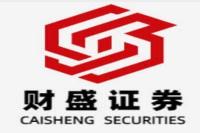Honda CRF1100 Recall: A Deep Dive into the ECU Issue and Consumer Safety
Meta Description: Honda CRF1100 motorcycle recall details, ECU software update, safety risks, affected models, consumer rights, and expert analysis. Learn about the recall process and what Honda is doing to address the problem.
This isn't just another news blurb about a motorcycle recall; this is a comprehensive analysis of the Honda CRF1100 recall, delving deep into the technical aspects, regulatory implications, and especially, the consumer experience. We'll unpack the official statement from the National Market Supervision Administration (SAMR) in China, dissect the root cause of the problem (a faulty ECU parameter), and explore the potential ramifications for riders. Forget dry, technical jargon; we're bringing you the story in plain English, laced with expert insights and a healthy dose of real-world perspective. Imagine yourself cruising down the highway on your prized CRF1100, only to experience a sudden loss of power – a terrifying scenario that could have severe consequences. This recall is precisely about preventing such near-misses from turning into tragic accidents. We'll guide you through the recall process, highlighting your rights as a consumer, and providing actionable steps to ensure your safety and peace of mind. This isn't just about fixing bikes; it's about protecting riders and upholding industry standards. We'll even go beyond the press release, offering practical advice and insights garnered from years of experience covering automotive and motorcycle safety. Stay tuned, because this isn't just a story; it's a cautionary tale, a testament to the importance of rigorous quality control, and a guide to navigating the complexities of large-scale product recalls. So buckle up, and let's delve into the nitty-gritty of this Honda CRF1100 recall.
Honda CRF1100 Recall: Affected Models and ECU Issues
The recent recall of 453 imported 2022-2024 Honda CRF1100 motorcycles in China, announced by the SAMR on December 20th, highlights a critical issue with the motorcycle's Electronic Control Unit (ECU). Specifically, the SAMR's announcement points to an incorrectly set parameter within the ECU's anti-wheelie control system. This miscalibration leads to a reduction in torque output during acceleration, potentially causing the bike to lose balance and fall. Yikes! This isn't a minor glitch; this is a serious safety hazard that could result in injuries to riders.
The recall affects specific model years: 2022-2024 CRF1100 models produced between March 3rd, 2022, and August 2nd, 2024. Honda Motorcycle Sales (Shanghai) Co., Ltd. is responsible for the recall and will be upgrading the ECU software free of charge for all affected motorcycles. This is crucial information for owners; it's not something you want to miss. Honda’s prompt response demonstrates their commitment to consumer safety, but it underscores the importance of regular maintenance and staying informed about official recalls.
Understanding the ECU's Role
The Electronic Control Unit (ECU) acts as the motorcycle's "brain". It manages various functions, from fuel injection and ignition timing to traction control and the anti-wheelie system (which is at the heart of this recall). In simpler terms, it's a sophisticated computer that controls how the engine functions and interacts with other components. A tiny error in coding or parameters can have significant consequences. The problem here highlights the critical need for precise calibration during ECU programming and the importance of rigorous testing before releasing a new model.
The Recalled Bikes and Their Potential Risks
Let's break down the danger. Imagine you're accelerating, perhaps overtaking another vehicle or navigating a tricky turn. The sudden reduction in power, due to the faulty ECU parameter, could lead to a loss of control. This is especially risky at higher speeds or in challenging road conditions. The potential for a fall, leading to injuries or even worse, is a real and serious concern. The recall is not a mere inconvenience; it's a direct response to a potentially life-threatening situation.
The Recall Process: What Owners Need to Know
The recall process should be straightforward. Honda Motorcycle Sales (Shanghai) Co., Ltd. will be contacting affected owners directly. However, owners should proactively check the official Honda website and SAMR announcements for updates and confirmation. The process typically involves scheduling an appointment at an authorized Honda dealership to have the ECU software updated. This is a free service, and owners should not incur any costs.
Here's what owners should do:
- Verify your motorcycle's VIN: Check if your CRF1100's Vehicle Identification Number (VIN) is within the recalled range.
- Contact Honda directly: Reach out to Honda customer service to confirm the recall and schedule an appointment for the software update.
- Document everything: Keep records of all communications with Honda, including appointment confirmations, service receipts, and any other relevant documentation.
- Ensure the work is done: Make sure the technician performs the ECU software update correctly.
Consumer Rights and Legal Recourse
While Honda is taking proactive steps, understanding your consumer rights is essential. In most jurisdictions, manufacturers are legally obligated to address safety defects. If you experience any issues during the recall process or if the software update fails to resolve the problem, you have legal recourse. Consulting a consumer protection organization or legal professional can help you understand your rights and explore potential options. Remember, your safety and satisfaction are paramount.
Preventing Future Recalls: Lessons Learned
This recall serves as a stark reminder of the critical importance of rigorous quality control in the manufacturing process. While no system is foolproof, this incident highlights the need for more stringent testing and verification procedures, particularly for complex electronic components like the ECU. The automotive and motorcycle industries must continue to prioritize safety and transparency, ensuring that any potential safety hazards are identified and addressed swiftly.
Frequently Asked Questions (FAQs)
Q1: How do I know if my motorcycle is affected by the recall?
A1: Check the official Honda website and SAMR announcements for the list of affected VIN numbers. Contact Honda customer service directly if you're unsure.
Q2: Is the ECU software update free of charge?
A2: Yes, the ECU software update is a free service provided by Honda as part of the recall.
Q3: How long will the ECU update take?
A3: The time required for the update may vary depending on the dealership's workload. Contact your local dealership for an estimated time.
Q4: What if the problem persists after the ECU update?
A4: If the problem continues after the software update, contact Honda customer service immediately and document the issue. You may have further legal recourse.
Q5: What should I do if I experience a loss of power while riding my CRF1100?
A5: If you experience a sudden loss of power, safely pull over to the side of the road. Contact Honda and your local dealership to report the incident.
Q6: Are there any other potential issues with the CRF1100 not related to this recall?
A6: While this recall focuses on the ECU issue, it's crucial to always stay informed about any potential safety advisories or recalls concerning your motorcycle. Regular maintenance and inspection are key to ensuring your safety.
Conclusion
The Honda CRF1100 recall serves as a potent reminder of the importance of rigorous safety standards in the motorcycle industry. While Honda's swift response is commendable, it also underscores the need for continuous vigilance and transparent communication between manufacturers and consumers. By understanding your rights, staying informed, and taking prompt action, you can ensure your safety and protect yourself from potential risks. Remember, your safety is paramount. Don't hesitate to reach out to Honda or seek professional advice if you have any concerns.



